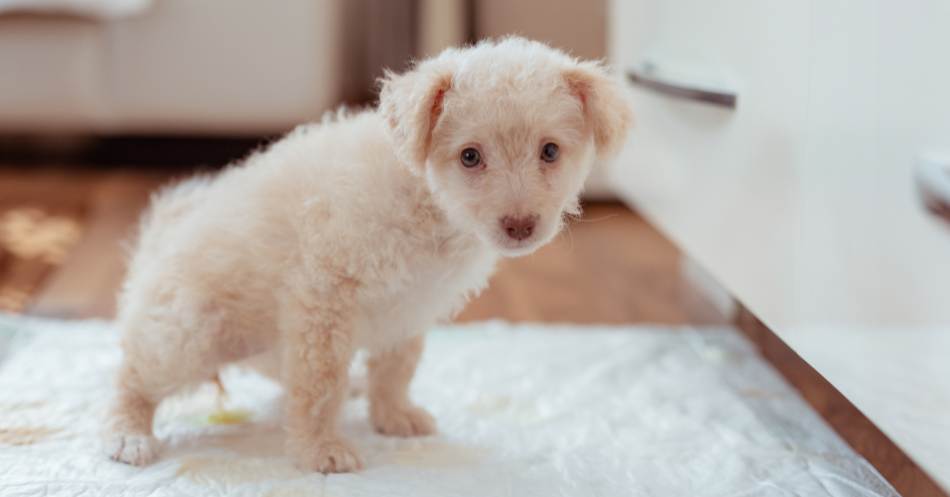
What You Really Need to Know About Using Dog Pee Pads
If you’ve just adopted a dog or have a new puppy in the home, you know what a struggle it is to keep your home pee-free.
Using pee pads is a common practice since they can at least contain the pee to one area. Are they the best solution though?
Here are some common arguments for using pee pads.
5 Common Reasons Pet Parents Use Pee Pads for Dogs (and why you shouldn’t)
Should you keep pee pads on hand? Here are some common reasons pet parents use them and why I rarely recommend them.
Pin Me Now, Read Me Later!
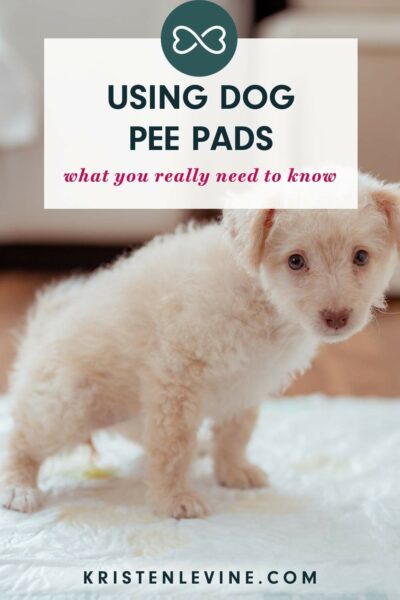
Potty Training a Puppy
If you’ve brought home a new puppy, you might quickly become exhausted making frequently potty trips. In fact, puppies may need to pee every couple of hours (or more!).
Rather than lose sleep and constantly clean up messes, some parents confine their new puppy to an enclosed area, like a crate or pen, and lay out pee pads so the mess is easier to clean up.
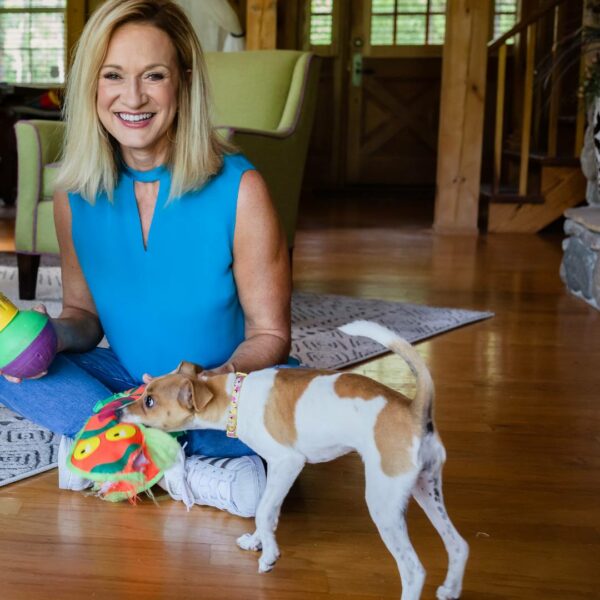
Unfortunately, by doing this, you’re training your dog to pee in the house. Every dog should know the whole house is off-limits when it comes to peeing.
In addition, by not taking them outside to pee, you’re losing out on important bonding time. Training your puppy to pee is an important part of them learning to respect you and bond with you as their new pet parent.
I fully understand how exhausting it is to train a new puppy! When Tulip was young, I felt like I was taking care of a newborn – up every few hours, taking her outside every two hours or more, playing with her when she was awake. It’s tiring!
But it’s all part of becoming a new dog mom, so it’s important to be ready for the commitment before you bring your new puppy home.
You can learn more about how to train your puppy in this article.
Accidents When Left Alone
Another common reason to use pee pads is so your dog has a place to “go” when you’re away for long periods of time. Rather than come home to puddle of pee on directly on your floor, the reasoning is that you can scoop up the pee pad and throw it away.
While there are times when your dog may be left home longer than you anticipated, in general, your dog shouldn’t be alone for such long periods of time that a pee pad seems necessary.

Leaving a dog home alone is not only a problem because of needing to use the bathroom, but dogs are social creatures by nature. They need their humans to bond with them, play with them, and interact.
Having a dog is a commitment to caring for and being a guardian to a living being that depends on you physically and emotionally.
However, there may be occasions when you’re away from home longer than usual. What can you do then?
- Have a dog walker on standby
- Install a doggie door that leads to an outdoor pen
- Ask family, friends, or neighbors come by to play and take them outside
- Bring your dog with you
Generally speaking, any of these options are better than using pee pads, which will only serve as confirmation that your home is an acceptable place to pee.
Senior Dogs
Sadly, as our dogs age, they often begin to lose control of their bodily functions. This frequently happens towards the end of a dog’s life.
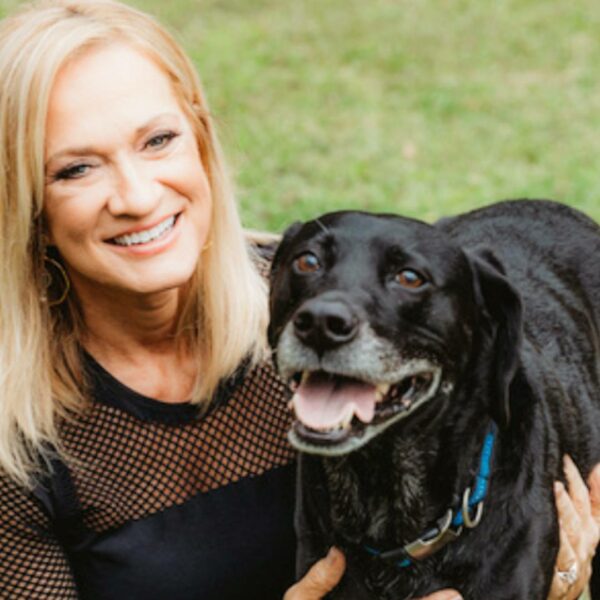
This is one of the use cases for pee pads that I approve. At this point, you’re not looking to train your dog. You simply want them to be comfortable.
A pee pad can be especially useful if they’re having trouble holding their urine or poop, or if they have mobility issues that make it difficult for them to go outside.
After Birth of a Litter
Everything is messy when momma has just given birth! This is a great time to use pee pads.

Newborn puppies are not at the point where they can be trained to go outside. Using pee pads is a good way to save your floors for the first few weeks of your new puppy’s life.
After Surgery
Dog mom, Pamela, tells us after her Yorkie mix, Zuzu, had knee surgery, she didn’t have use of her back legs for about two days.
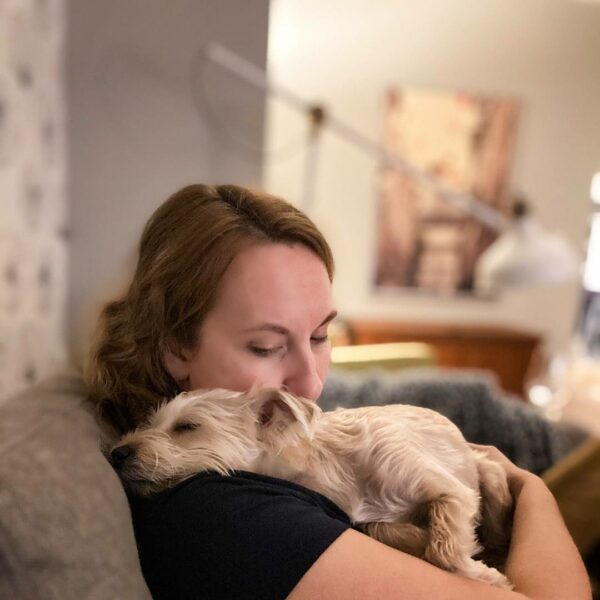
Because of this, she would let out her urine at any time, even when she was being held.
In situations like this, pee pads can be helpful since they can be tossed in the garbage right away and make it easier to keep your dog clean while they’re healing.
A Better Alternative to Dog Pee Pads
At this point, you may have figured out I’m not a big proponent of dog pee pads. But if you can’t use pee pads, what should you do to keep your house pee-free?
I’ve literally written the book on how to stop your dog from peeing in the house! You can download your free copy below.
The book outlines six different tinkle types:
- The un-housebroken
- The tiny tinkler
- The well-meaning pet parent
- The check-up champ
- The territory marker
- The anxious tinkler
Once you’ve identified your dog’s tinkle type, you can then get to the heart of your dog’s indoor peeing.
This is a critical first step, because if you don’t address the cause, no matter how much you clean up the mess, it will keep happening.
This brings us to the next step in creating a pee-free home without using pee pads.
How to Clean Up Dog Pee and Get Rid of the Smell
The next step to a pee-free home is to clean up messes properly. This is often tricky!
You might be tempted to grab the nearest household cleaner to spray and wipe away the mess. However, household cleaners aren’t formulated to properly clean pet urine.
Instead, you’ll need to use an enzymatic cleaner. These are designed to “eat” the bacteria that cause stink and stains. But here’s the catch: Most pet parents aren’t using them correctly.
My favorite cleaner is Kinderbean® No-Stress Mess Eraser. It’s gentle enough to use around your pets. Yet, it’s powerful enough to clean up tough stains and odors, even if they’ve been there for a long time.
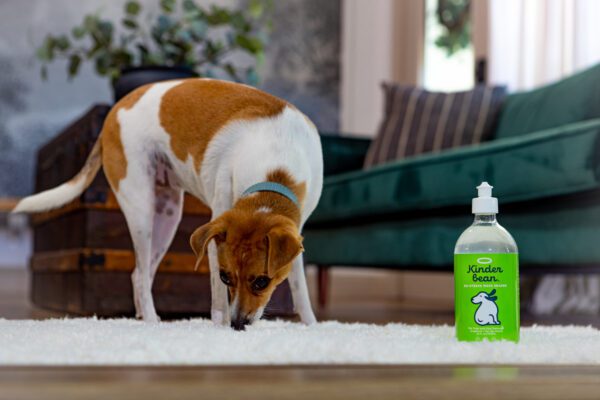
It contains just four ingredients:
- Purified water
- Plant-derived cleansers (from coconut and palm oil)
- Enzyme blend with sodium citrate/citric acid
- Grapefruit and tea tree essential oils (yes, they’re safe for pets!)
The key is to fully saturate the soiled area with the product and then let it sit there to allow it to eat the bacteria.
- Soak up as much of the mess with paper towels or rags.
- Saturate the area with No-Stress Mess Eraser.
- Place a clean cloth on top, and let it air dry for 12-18 hours.
- Repeat if necessary
By removing the bacteria properly, your pet will be less likely to return to the scene of the crime.

Remember, though, you must also change the behavior, based on your dog’s tinkle type above. Even if you’ve cleaned the spot properly, your dog may pee there again if they’ve been doing so out of habit.
The Final Woof
There are rare cases when pee pads are an effective and lasting method for managing your dog’s indoor peeing. Newborns, seniors, and dogs recovering from surgery may benefit from the temporary use of pee pads.
However, to achieve a pee-free home and strengthen the bond between you and your dog, it’s best to get to the heart of their indoor peeing and address it together.

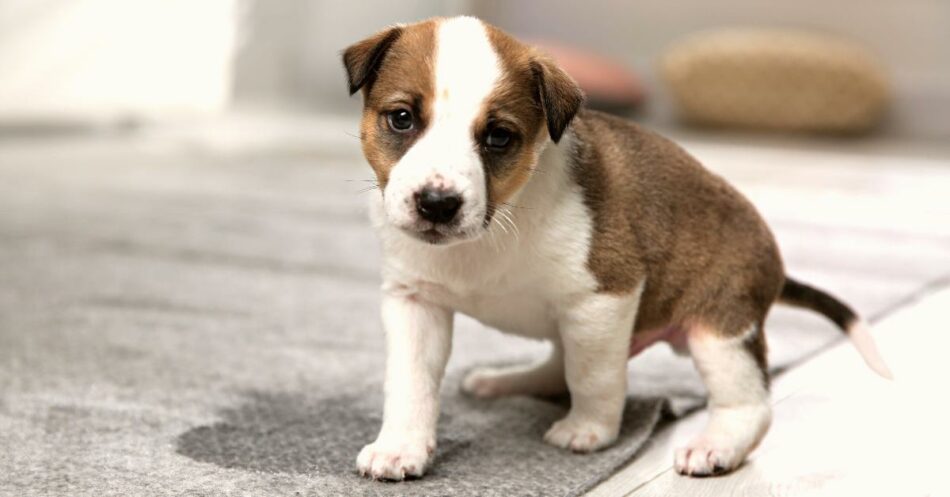
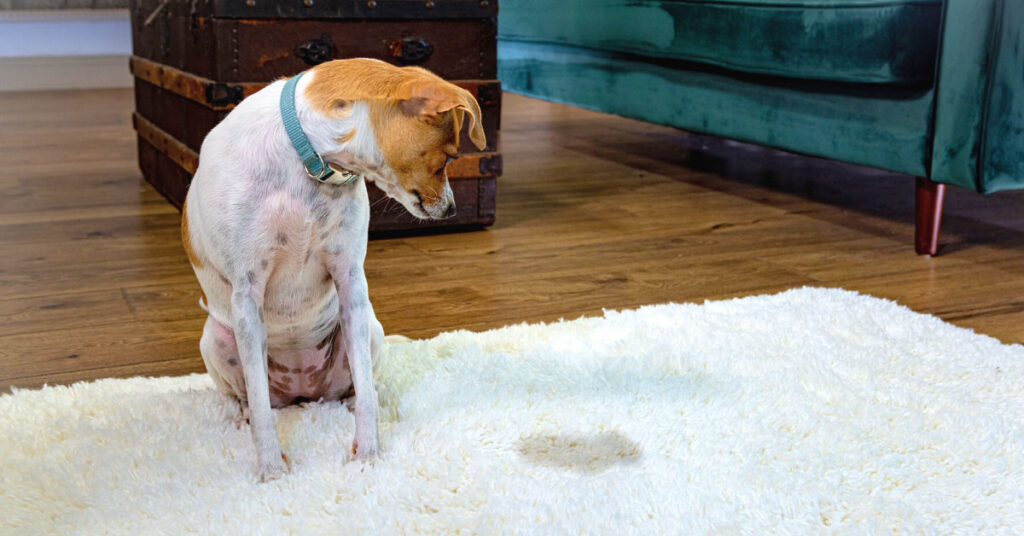
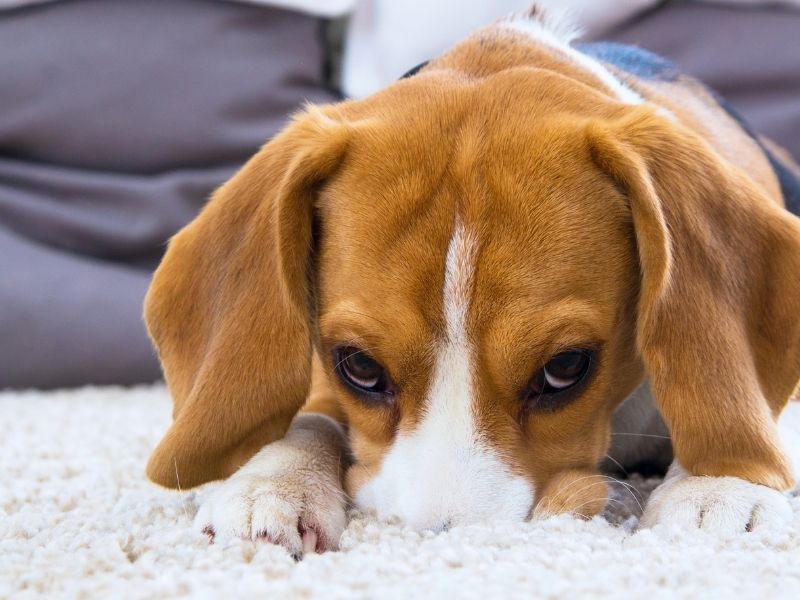
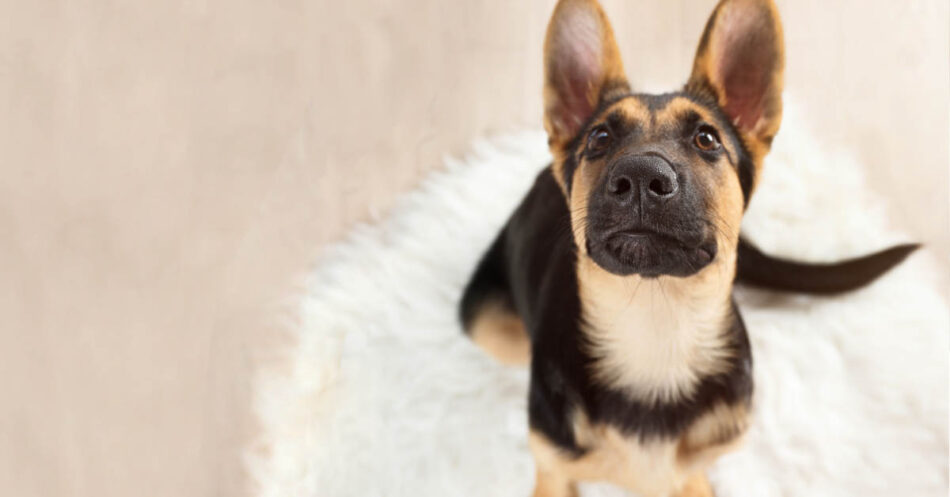
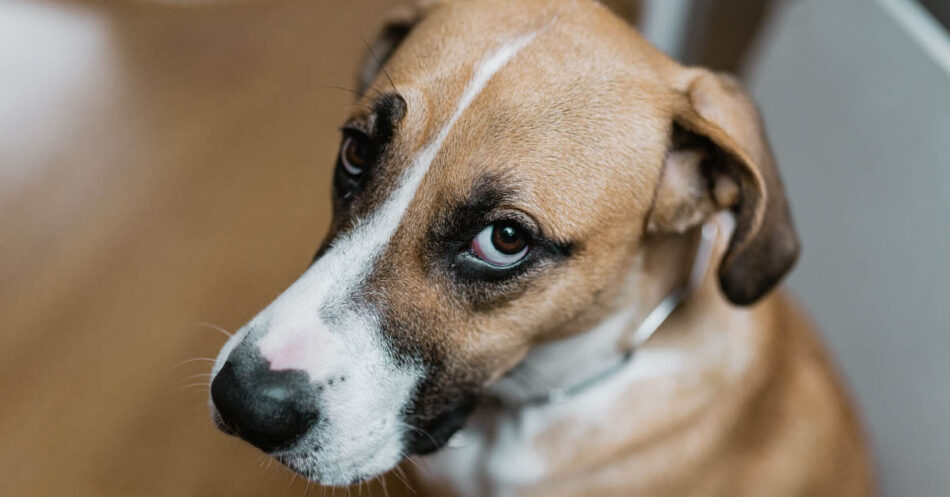
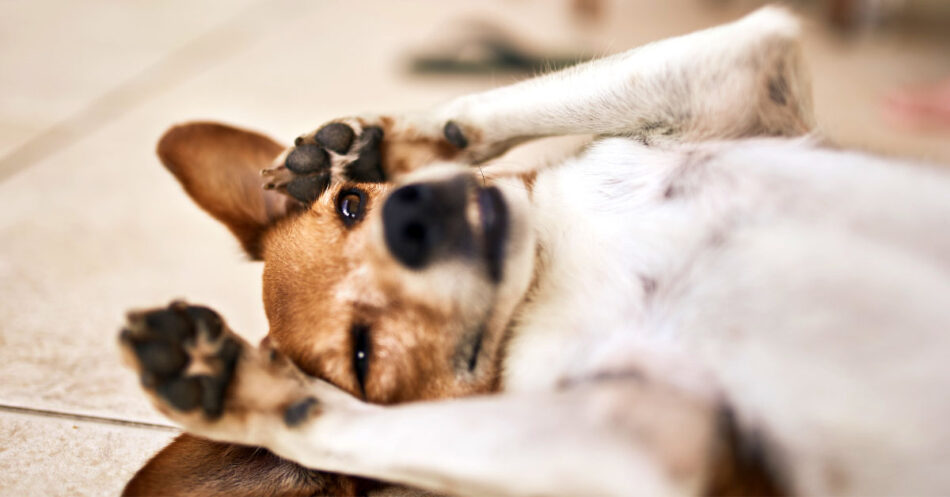
This Post Has 0 Comments